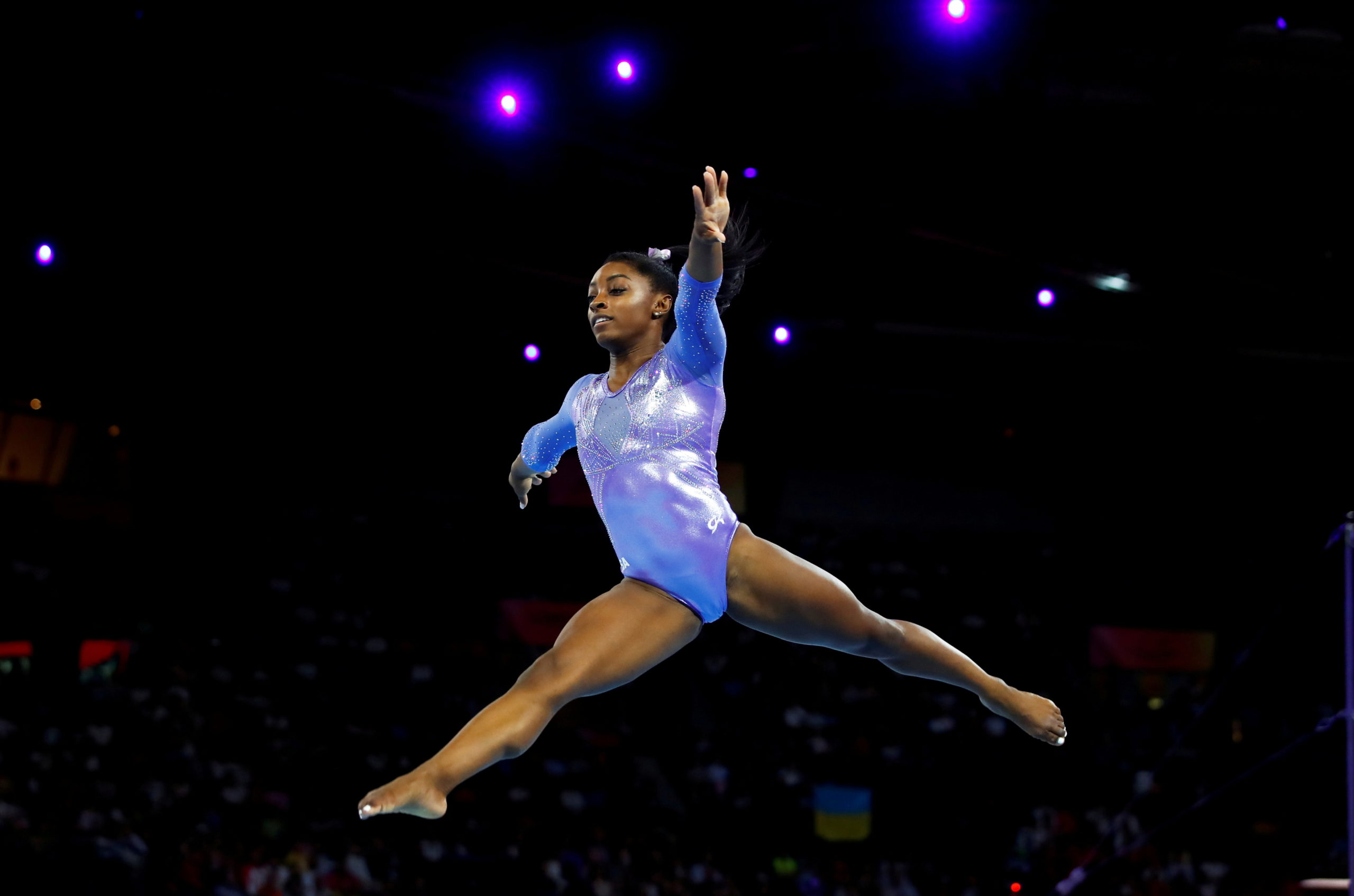Things to know about the gymnastics competition at the 2020 Tokyo Olympics:
THE ABSOLUTE BASICS
- Men compete on six apparatus: floor, pommel horse, rings, vault, parallel bars and horizontal bars.
- Women compete on four apparatus: vault, asymmetric bars, balance beam and floor.
- Qualification rounds decide who moves on to the team, individual all-around and individual apparatus finals, with eight teams advancing to the finals.
HOW MANY MEDALS?
There are 14 gold medals up for contention.
WHAT HAPPENED IN RIO?

FILE PHOTO: Simone Biles of the U.S. in action – Artistic Gymnastics – 2019 World Artistic Gymnastics Championships – Women’s Floor Final – Hanns-Martin-Schleyer-Halle, Stuttgart, Germany – October 13, 2019 REUTERS/Wolfgang Rattay
U.S. gymnast Simone Biles, the first female gymnast ever to win three consecutive world all-around titles, became one of the standout athletes at the 2016 Olympics after taking home four golds and one bronze. Biles became the first woman in 32 years, and fifth overall, to win four golds at a single Games.
Japan’s Kohei Uchimura became the first gymnast in 44 years to gain back-to-back all-around titles in a heart-stopping final which he won by 0.099 of a point.
WHAT CAN WE EXPECT IN TOKYO?
Gold medalist Carlos Edriel Yulo of the Philippines performs in the floor exercise in the men’s apparatus finals at the Gymnastics World Championships in Stuttgart, Germany, Saturday, Oct. 12, 2019. (AP Photo/Matthias Schrader)
All eyes will be on Biles and the U.S. women’s team to see if they can repeat their golden Rio feats after overcoming a number of hurdles, including revelations after Rio that many Olympians had been sexually abused by a U.S. gymnastics team doctor, who has since been jailed.
The question for men is who will assume Uchimura’s crown, since the 32-year-old will compete only in horizontal bar to spare his battered body. Bets are on Russian Nikita Nagornyy, the reigning European and world all-around champion.
World champion gymnast Carlos Yulo is one of the Philippines’ strongest bets to win a gold. He ruled the floor exercise event in the 2019 World Artistic Gymnastics Championships in a first for the country.
WHAT’S NEW?
For the team event, the numbers were reduced from five members per team to four for each nation, while further allocations were available for up to two specialists.
WHEN IS IT HAPPENING?
From July 24 to August 3.
WHERE IS IT HAPPENING?
This picture shows the Ariake Gymnastics Centre, a venue of the Tokyo 2020 Olympic and Paralympic Games, during a press preview in Tokyo on October 29, 2019. (Photo by Kazuhiro NOGI / AFP)
The Ariake Gymnastics Centre in central Tokyo.
HOW DID WE GET HERE?
Gymnastics has been around in some form at least since Ancient Greece. A free-flowing style was named “artistic gymnastics” in the early 1800s to differentiate it from the style used in military training.
Artistic gymnastics has been part of the Olympics since the Games were revived in 1896, with women’s events added from Amsterdam 1928.
WELL FANCY THAT
George Eyser, who competed for the United States in the 1904 St Louis Summer Olympics, won gold in the vault and parallel bars with a wooden left leg, after reportedly losing most of his leg in his youth when it was run over by a train.


